Last updated: April 27, 2023
A keto (short for ketogenic) diet is a low carb, high fat way of eating that can help you lose weight and improve your overall health. It's a proven diet for weight loss, but also offers benefits for diabetes, high cholesterol and triglycerides, inflammatory conditions and more. Here is a detailed overview to living a ketogenic lifestyle.
This post contains affiliate links. I may earn from qualifying purchases at no additional cost to you.
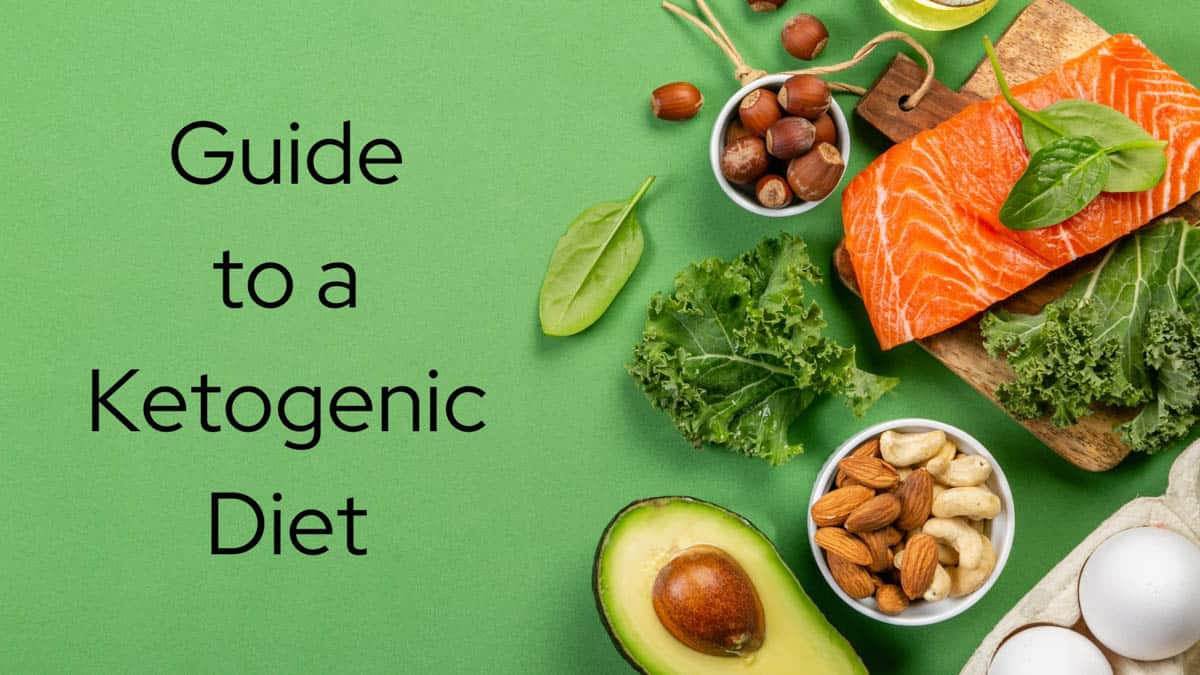
The popularity of the keto diet has exploded over the last several years. Thousands (maybe millions?) of people have lost weight, reduced their risk for disease and even reversed the disease process. It’s become much more than a diet – it’s a movement and a lifestyle. This article will take a deep dive into the ketogenic way of eating and its many benefits for health - including weight loss.
There are some sites that refer to the keto diet as only being good for weight loss but they don't address how or why it's beneficial for overall health, which is really unfortunate. A well-rounded keto diet focuses on eating healthy fats, whole foods and clean eating. Some people think it’s supposed to be (or designed to be) an all-meat, all-bacon diet, which couldn’t be further from the truth. An optimal keto or low-carb diet includes eating a good quantity of keto-friendly vegetables, berries and some fruit (like avocados) as well as healthy fats and high quality meat, fish and poultry.
Eating a healthy keto diet can be done and it's my goal to show you how. You don't have to be a keto master to eat well. Don’t get me wrong – I love bacon, sausage and good ol’ greasy stuff. But, as in all things, balance is key. And to make sure you’re getting proper nutrition, a proper balance of veggies, berries, quality meats and healthy fats is imperative.
Table of Contents
What is a keto diet?
‘Keto’ is short for a ketogenic diet – a high fat, low carb, low to moderate protein diet. By reducing net carbohydrates to between 20-50g per day and increasing fat intake, your body enters into a metabolic state called ketosis. This essentially means that your body is now burning fat for energy instead of carbohydrates and glucose. Your liver converts fat into ketones, which become your main source of energy.
Being in ketosis and releasing ketones has been shown to have numerous health benefits that include improved blood sugar management, increased satiety, reduced cholesterol and triglycerides as well as weight loss.
Glucose and Glycogen
First, we should review the roll of carbohydrates in creating fuel for energy, and how a ketogenic lifestyle reduces intake of carbs, and changes how the body uses fuel. Carbohydrates are the body's main source of fuel to create glucose and glycogen stores. Primarily, our bodies use blood glucose (aka blood sugar) and stored glycogen for energy. Blood sugar is glucose in the blood stream that is created by the carbohydrates we eat and used as an immediate source of energy. Excess carbohydrates consumed that are not immediately used as fuel by the body are converted to glycogen stores in the liver for use later when the body needs it. Or, with the help of insulin, carbohydrates can also be converted into fatty acids that are stored as fat.
If there is not enough blood sugar available in the bloodstream for energy, our bodies turn to the glycogen stores in the liver, which are broken down to release glucose into the bloodstream to be used as fuel. There are many ways that the body can burn through our glucose and glycogen stores. The most common being: strenuous exercise, fasting and low carbohydrate intake - typically less than 50g of carbs per day.
Once the body runs out of both glucose and stored glycogen, it will turn to dietary fat and stored body fat for fuel by converting them into ketones that are now used for fuel.
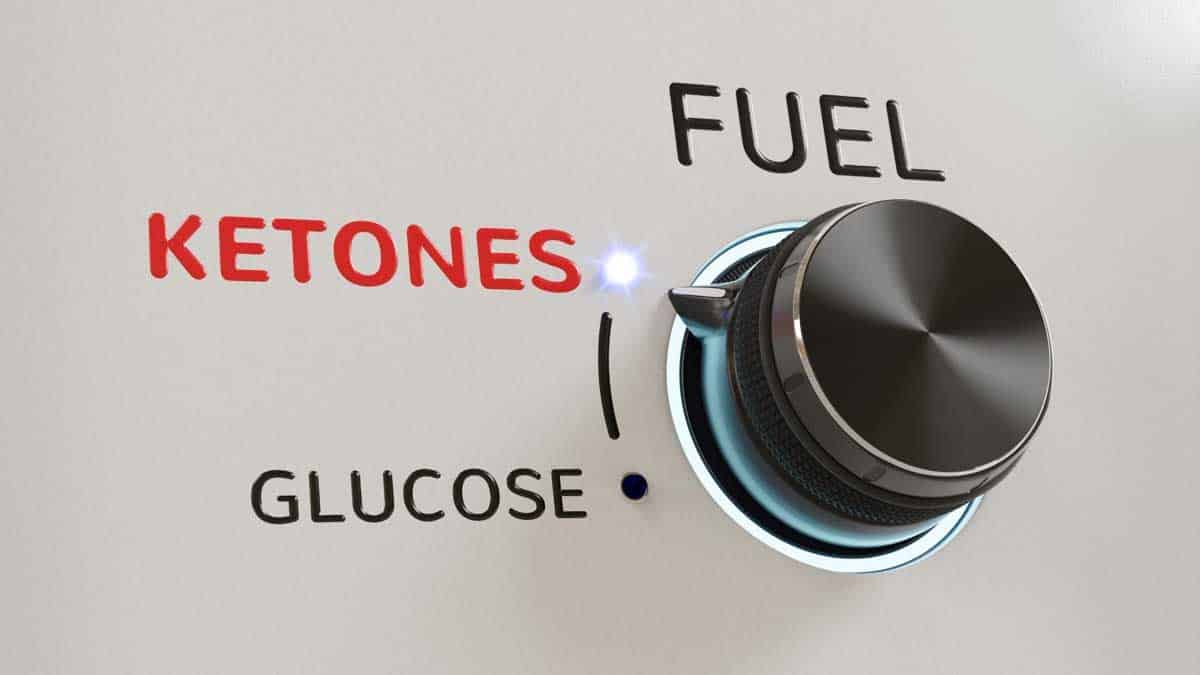
What are ketones?
Ketones are chemicals that are produced in your liver. Often, people associate ketones with a ketogenic diet, but we often have ketones in our bloodstream regardless of the kind of diet we follow. Following a ketogenic diet encourages the body to use ketones as its main fuel source.
Ketones are a by-product of the body breaking down fat and are the result of a metabolic response to your body being in ketosis.
Once the body runs out of glucose and stored glycogen, it will turn to dietary fat and stored body fat for fuel, which produces ketones. Ketones are an alternative fuel that is produced in the liver from the breakdown of fats. A ketogenic diet is followed specifically to reduce carbohydrate intake in order to create ketones for energy. This results in the metabolic state called ketosis.

What is ketosis?
Ketosis is, simply put, the metabolic state where your body is using ketones as fuel instead of glucose and stored glycogen. Reaching and maintaining ketosis is the goal of a ketogenic diet.
Sometimes nutritional ketosis is confused with ketoacidosis - they are NOT the same. You will not get ketoacidosis if you are in ketosis (however, if you're diabetic, especially on insulin, it's very important to monitor your ketone levels accurately). Ketoacidosis is an uncontrolled production of ketones that occurs, most often, due to insulin deficiency in type 1 and type 2 diabetes. In ketosis, ketones levels are typically between 0.5 and 3.0 mM, where ketoacidosis can create blood concentrations higher than 10mM. Ketoacidosis is considered a medical emergency due to the body's pH (acid-base balance) becoming severely unbalanced.
Benefits of a low-carb ketogenic diet
Even though low-carb diets have been controversial, studies have shown them to be beneficial and healthy. Some of those benefits being:
- Weight loss – I talk a bit more about weight loss later in this article. There are many reasons why following a ketogenic lifestyle is incredibly effective for losing weight (Springer). It is a diet that provides satiety (PubMed1) while still eating healthy, nutrient dense (and delicious) foods. For some, it may even lead to higher calorie burn and can be more effective for weight loss (PMC1) than some low-fat and low calorie diet models.
- Mental performance – Ketones provide quick and efficient fuel for our brain. They cross the blood-brain barrier very readily, which can actually enhance our cognitive function. Some folks with autoimmune diseases that experience ‘brain fog’ have noticed a marked improvement (PMC2) after starting a keto diet.
- Physical energy – many people following a ketogenic diet report that ketones are a more efficient fuel source (MDPI) for our muscles during exercise. They will typically provide a more steady energy source than simply relying on glucose. However, this is not true for all athletes that eat keto, which is why there are various types of ketogenic diets.
- Reduced cravings and appetite - the ketogenic diet can regulate appetite and decrease hunger. Ketosis can suppress hormones that are responsible for stimulating hunger. Insulin levels are stabilized and your body doesn't experience glucose peaks and valleys (PubMed2) that can cause that 'hangry' sensation.
- Better digestion - a healthy keto diet includes many gut-healthy foods that can help lower intestinal inflammation (PMC3) and increase healthy bacteria in the gut.
- Stabilized blood sugar - Managing carbohydrate intake is often recommended for people with type 2 diabetes, pre-diabetes and metabolic syndrome. Following a keto meal plan can stabilize insulin levels (PMC4) and decrease blood sugar levels.
- Reduced cholesterol and triglycerides - A keto diet can help improve risk factors for heart disease (PubMed3), such as lowering body fat, reducing blood pressure and reducing 'bad' cholesterol (LDL), while increasing 'good' cholesterol (HDL).
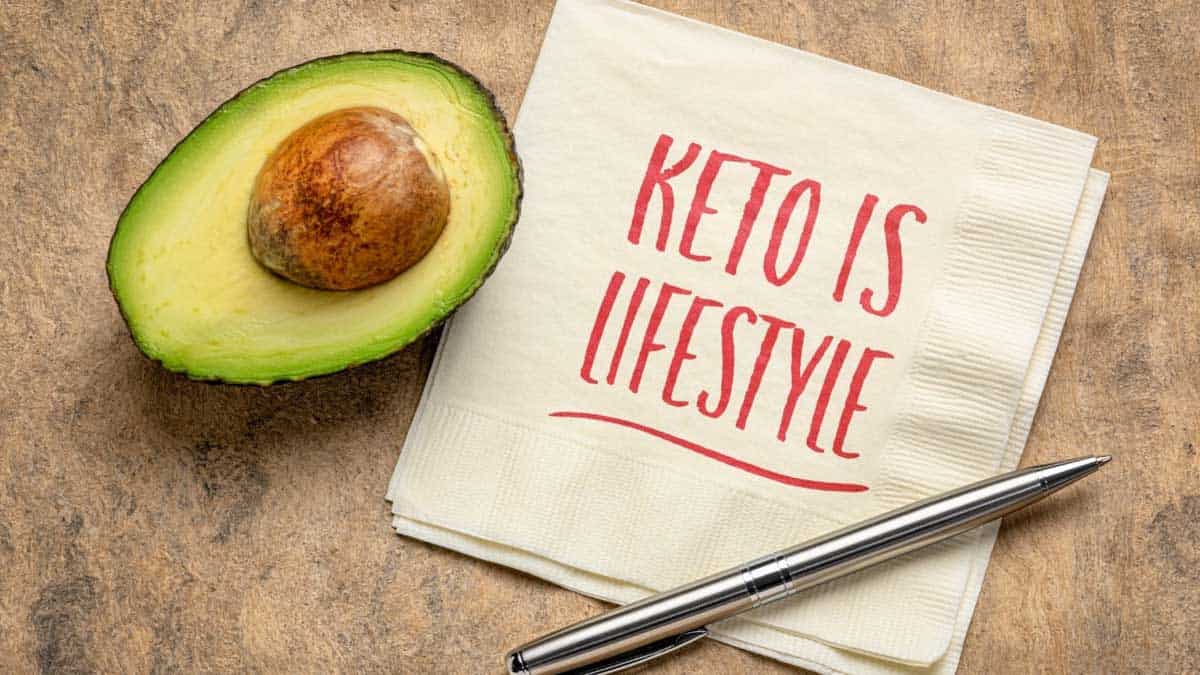
Is keto for everyone?
While many people can benefit from a keto diet, it may not be for everyone. Every body is different and what works for one person may not work for another.
Be sure to discuss any health conditions with your physician before staring a keto lifestyle. There may be some risk factors with ketosis especially for those with kidney disease, those who are pregnant or breastfeeding, or are on certain medications such as blood pressure medicine (a keto diet can cause a decrease in blood pressure, so this should be monitored). This is not an exhaustive list, so check in with your doctor.
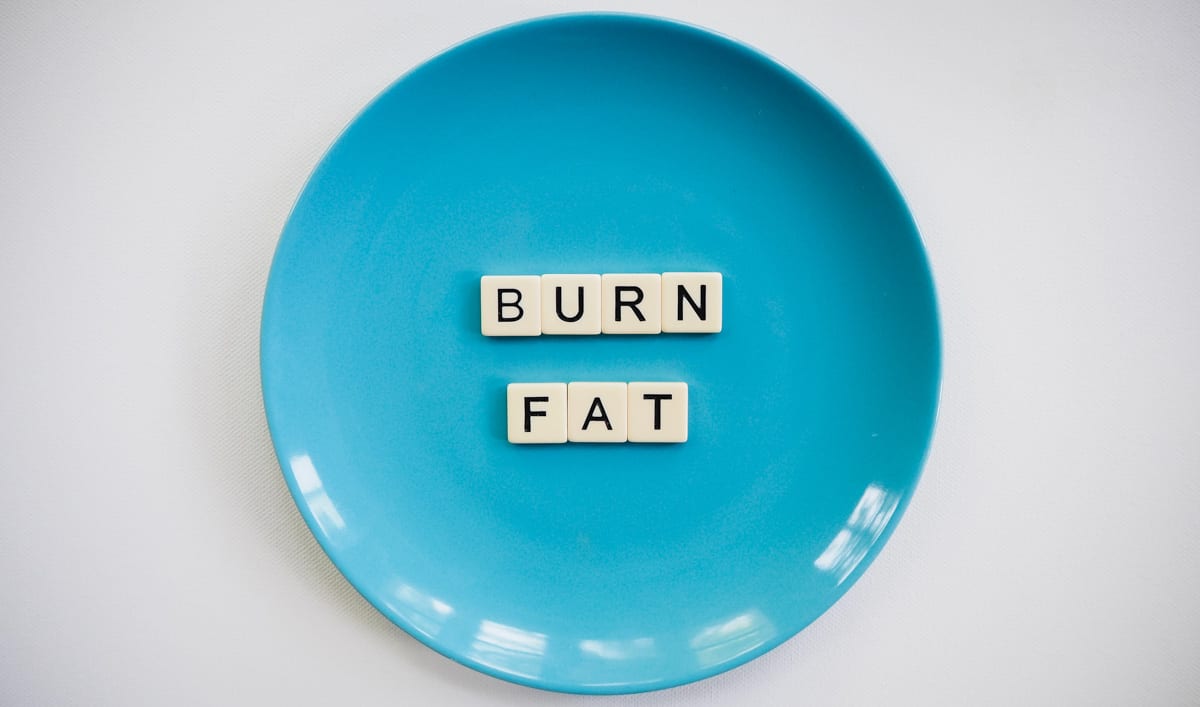
Fat adaptation
This is also known as ‘keto adaptation’. Becoming fat adapted is really the goal of the ketogenic diet and is a little bit different than just being in a state of ketosis. Fat adaptation means that your body has been in ketosis long enough that it has fully transitioned to burning fat as fuel and your ketone metabolism is optimized. To put it simply, your body is now running like a well-oiled ketone-burning machine.
Fat adaptation can result in less hunger, improved energy, decreased cravings and increased weight loss.
There’s no set timeline for this, as it will vary from person to person. Generally, it can take anywhere from 4-8 weeks after achieving ketosis.
How long does it take to get into ketosis?
This will vary from person to person. It can take anywhere from 2 days to over a week. How quickly this happens will depend on your macronutrient intake, your metabolism and your activity levels. Some people like to use fasting techniques to accelerate the shift into ketosis, but that isn't necessary. I actually recommend waiting to experiment with fasting until after you've shifted into ketosis so that any side effects can be managed more effectively.
Testing for ketones
You don't have to test for ketones to be successful on a keto diet. But, testing is an effective tool to help ensure you have reached nutritional ketosis. Testing is beneficial because you can gain insight into how efficiently your body is producing and using ketones. It’s also a good check to see if your dietary changes are working and if you need to make any adjustments. When first starting a keto journey, it's a good idea to test daily, at the same time of day, preferably between meals.
When our bodies produce ketones, we may not use all of them, creating an excess. This is perfectly fine and normal. If our bodies aren’t utilizing all of the ketones we produce, they will simply be excreted in the breath and/or in the urine. These two routes of excretion provide easy ways to test for ketones.
There are three ways to test ketone levels: Breath, urine and blood testing, with blood testing being the most accurate. Breath and urine will only test for ketone bodies that your body is excreting. Blood tests will actually give you an accurate analysis of what your body is currently using.
As testing the breath and urine is the least invasive, they tend to be the preferred methods. When first starting a keto diet, your body is learning to adapt to using ketones. You will probably excrete more ketones than you will once your body has reached ‘fat adaptation’.
Urine testing
This can be done in a lab (which would be the most reliable way of testing urine, but not very efficient) or by using urine ketone test strips. The strips will help determine your ketone levels by matching the color on the bottle to the color the strip changes to after it's been saturated. They’re a very affordable option, but their reliability varies. As your body becomes more adapted to using ketones, you will excrete less, so it’s quite possible that the urine test will indicate that you’re in a lower level of ketosis than you’re actually in. The time of day, time of your last meal, hydration status and electrolyte levels can also affect your ketone readings.
Breath testing
This is another popular method of testing ketone levels that requires the purchase of a breath ketone meter. However, like urine testing, it’s not the most reliable method of testing.
Blood testing
Testing with a small drop of blood is the most accurate way to test ketones. This is done with a glucose/ketone meter. It requires you to prick your finger to draw out a small sample of blood that is applied to a test strip. Even though it’s the most reliable method to test ketone levels, most people aren’t fond of the pain factor, in that this type of testing requires piercing the skin.
Optimal blood ketone levels for weight loss are between 0.5-3 mmol/L.
When to test ketone levels
Finding the best time to test ketone levels varies from person to person.
Blood sugar is typically elevated in the morning. It's commonly referred to as the "Dawn Phenomenon" and is a result of cortisol and other hormonal fluctuations in the early morning hours. This means that ketone levels will naturally be lower when you get up, even after you've fasted all night.
It may be best to test ketone levels between meals, a little later in the day, such as just before lunch or dinner.
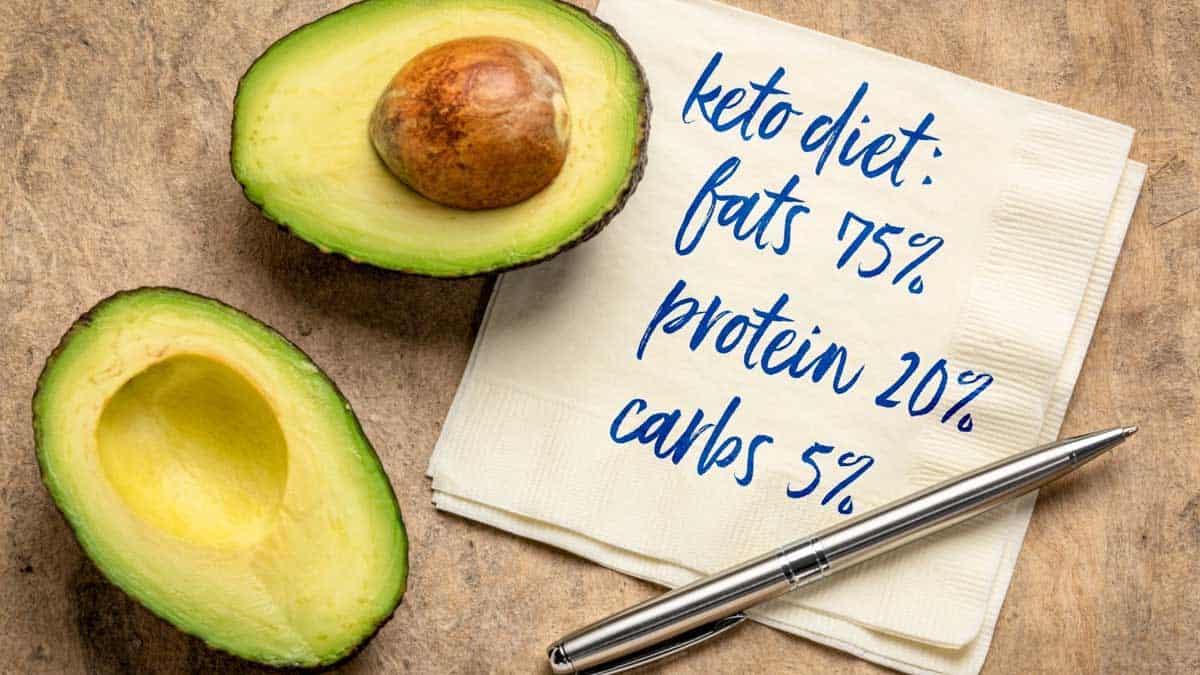
What are macronutrients?
There is a recommended daily caloric intake for every body. Macronutrients ('macros') are energy-supplying nutrients that are composed of fats, protein and carbohydrates to make up your total daily caloric intake. These are nutrients that you use in the largest amounts and will determine your success in reaching ketosis.
Dietary macronutrients for a standard ketogenic diet are divided into approximately 75% fat, 20% protein and 5% carbohydrates.
Regardless of which of the keto diet types you follow, counting macros is essential for achieving ketosis. Most people use an app to calculate these. I like Cronometer for my personal macro counting and for the recipes on this blog. Keep in mind that bodies are very unique, so there may be some fine tuning to your macros depending on how active you are as well as other health factors. That’s why there are a few ways to approach the diet, that I discuss, below.
What are net carbs?
Not all carbohydrates affect the body the same way. Some, like starches and sugars that raise blood glucose levels, are rapidly absorbed. On a keto diet, we want to keep these to a minimum.
Other carbohydrates aren't digested very well, if at all. These include fiber and sugar alcohols. This means that when you look at nutrition labels, or use an app, the carbs that count toward your daily total are the grams of carbs on the label minus the grams of fiber and sugar alcohol (if any) also listed for that food. Total carbs - fiber - sugar alcohol = net carbs (i.e. if you eat a serving that lists 10g carbs, 4g of fiber, and 1g of sugar alcohols, your net carb count for that serving is 10-4-1=5g of net carbs.
Types of keto diets
There are a handful of versions of the keto diet. Keto diets are not ‘one size fits all’. Some bodies handle ketosis differently than others. For example, one person may do well with 25g of carbs per day for months or years when others need to be at the higher end of the spectrum, closer to 50g per day (like myself). It all depends on what makes you feel best, while still making sure your body is maintaining a state of ketosis. Here’s a quick run-down of the various types of keto diets:
Standard Ketogenic Diet (SKD)
This is a very low-carb, high fat and low-to-moderate protein diet. Net carbs are typically kept between 20-25g per day. The typical macro ratio is 75% fat, 20% protein and 5% carbs.
Cyclical Ketogenic Diet (CKD)
The cyclical version of the keto diet follows the same macro goals as the standard keto diet 5-6 days per week, but involves a 1-2 day per week period of carbohydrate ‘re-feeding’. This is also known as 'carb cycling', which means you're going in and out of ketosis on a weekly basis. Some people state that eating up to 150g of carbs during these days can aid in gaining muscle mass and improving athletic performance. It also may just make you feel better.
Targeted Ketogenic Diet (TKD)
This version generally follows the same macro ratios as the standard keto diet but involves consuming additional carbohydrates just prior to and/or after high intensity workouts. This provides quick fuel to muscles and organs and can aid in preventing muscle stress and breakdown, especially during anaerobic activities.
I follow this form of keto lifestyle because I tend to feel best doing this, especially when I'm burning a ton of calories on long hikes or bike rides.
High Protein Ketogenic Diet (HPKD)
Adding higher protein to a keto diet is essentially the same as standard keto, with a slight adjustment to the macronutrient ratios: 60% fat, 35% protein and 5% carbohydrates. Some people simply feel better if they eat a bit more protein or follow this version if they are trying to gain muscle mass. Its all based on what works best for you.
Strict Keto (aka Clean Keto)
Eating 'Clean Keto' includes eating whole foods and avoiding processed foods, including gluten. All of the recipes on this site are gluten-free. Some people eating clean keto will consume under 30g of net carbs per day, but most keep them under 25. This requires close monitoring of macronutrients and calories.
Lazy Keto
The 'lazy' method is where you're only tracking net carbs, or are only eating keto diet-friendly foods without tracking macros or calories at all.
Dirty Keto
The 'dirty' style is where you eat anything you want, as long as your macros are balanced. This diet style can include processed foods and even sugar, as long as your macros are in proper ratios, which takes close monitoring, usually using an app.
There are many studies that have been done on the standard keto diet, but not quite as many (if any) for the cyclical or targeted diets. Some say that the latter two are mostly used by athletes and bodybuilders. I encourage everyone to start with the standard keto diet and see how you feel. Then alter it if you need to. Standard keto isn’t for every body, but it’s a good place to start. For me, I stayed on standard keto for 5-6 months. When I started increasing my workouts, I found I needed to change what I was doing and now follow a targeted keto lifestyle.
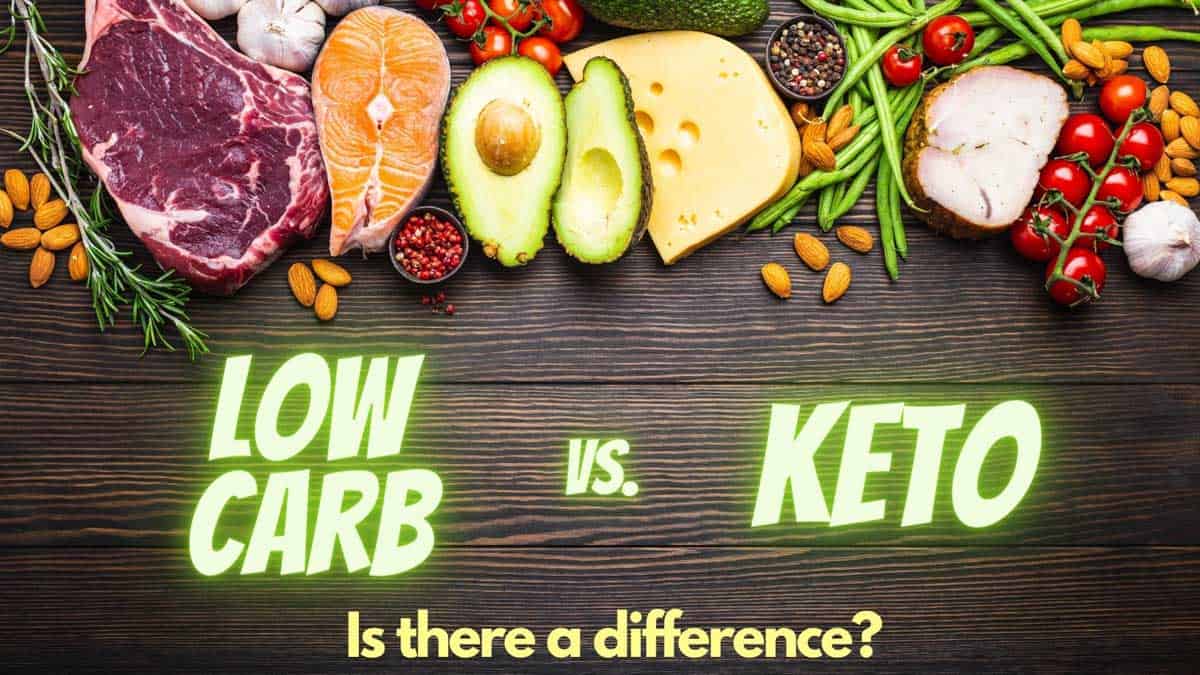
Low-carb diet vs a ketogenic diet
Following a low carbohydrate diet is similar to a keto diet. Some people refer to this as "Keto 2.0" - a lower fat variation of the standard keto diet. Macros are typically 50% fat, 30% protein and 20% carbs. Carbs are typically kept under 100g net carbs per day. However, the body never reaches a state of ketosis.
A keto or ketogenic diet specifically is referring to a diet or lifestyle that supports the body in producing ketones and achieving a metabolic state of nutritional ketosis.
There are many ways to follow a low-carb and keto lifestyle and there are benefits to each one. You just need to find which diet style works for you.
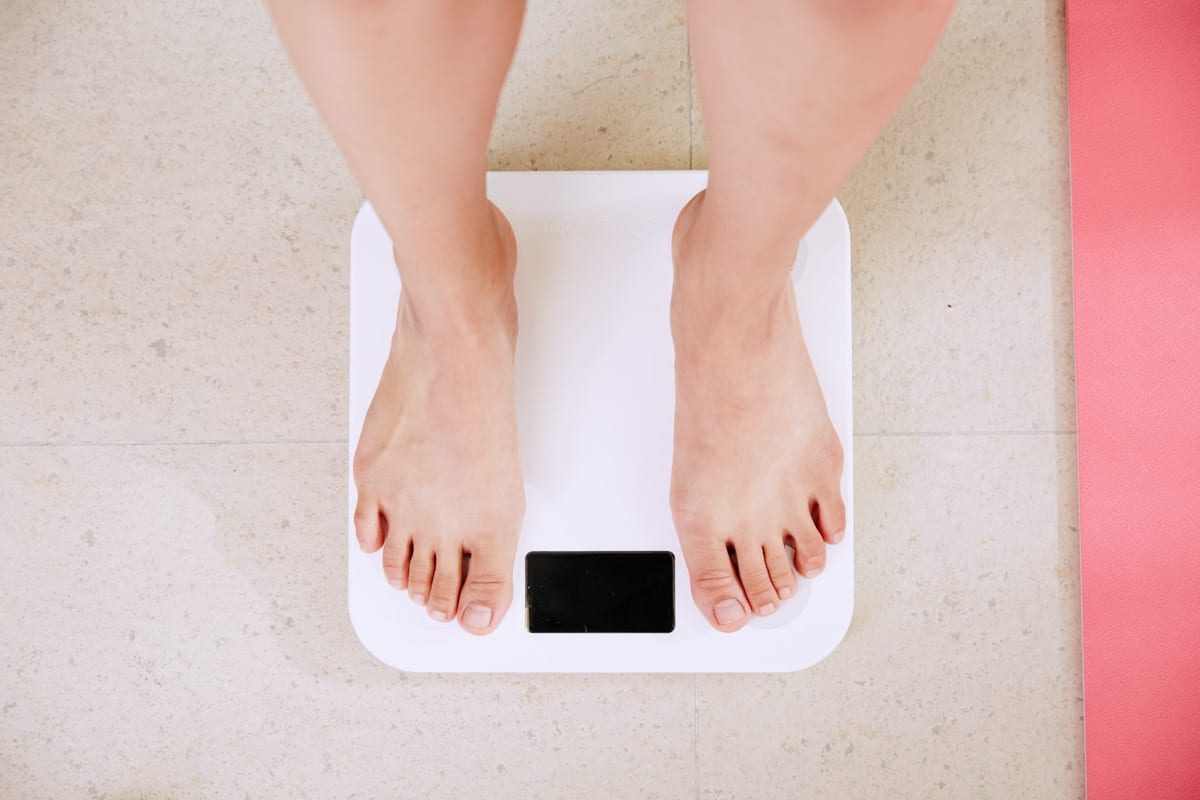
Keto and weight loss
Keto diets have become the trend among people wanting to lose weight. Why? Because not only has it been shown to work, but it provides incredible satiety and it’s fairly easy to adhere to (really!).
Once the body is in ketosis, it burns fat for energy, which stabilizes blood sugar and makes you feel full and satisfied longer. Not only can it help you lose more weight, but it helps you lose it without feelings of deprivation and hunger.
However, it is very important to watch your macro intake. Macro monitoring may seem a little daunting at first, but once you get more familiar with the diet and particular foods, it becomes second nature. After all, keto is much more than a diet – it’s really a change in lifestyle. For the better.
Keto diets have been shown to have many benefits that include accelerated weight loss, lowering risk factors for disease, including diabetes, high blood pressure and high cholesterol.
This completely contradicts the old version of the food pyramid and what we’ve been told about how a low-fat lifestyle is optimal for health and weight loss. In fact, the keto diet has been shown to be far superior to the low-fat diet model (PubMed4).

Side effects
Most of the side effects associated with a keto diet occur within the first week or two when you’re just beginning the diet. There is a metabolic shift that happens while your body is learning to adapt to using ketones for fuel, rather than glucose or glycogen.
Usually, one of the first things people experience is water loss. Many people are so excited about the rapid weight loss when they first start keto – much of that weight loss is likely due to the loss of water being stored in body tissues. Some people may benefit from that, but staying hydrated is extremely important.
Along with that water loss, you will also be losing electrolytes. It’s hugely important to keep those replenished during this adaptation period. But, being in ketosis typically means that you will have a greater need to consume electrolytes in general, even after adaptation. Especially in conjunction with exercise.
Keto flu
The most common initial effects people feel are those associated with what is commonly referred to as the ‘keto flu’. While this isn’t like having the real flu, it can make some people feel a little crummy temporarily. These symptoms most commonly include:
- Headaches
- Brain fog
- Fatigue
- Irritability
- Weakness
- Body aches
Electrolyte imbalance alone can cause many of the symptoms listed above. If you experience these symptoms, know they are only temporary and will pass. Make sure you are drinking plenty of water and replenishing your electrolytes.
There are a few good ways to consume electrolytes: through a well-rounded diet that consists of a good variety of vegetables, fruit and berries, making and consuming homemade bone broth and taking a good electrolyte supplement. Just make sure that the electrolyte supplement you choose is low in carbohydrates. I like the Ultima brand.
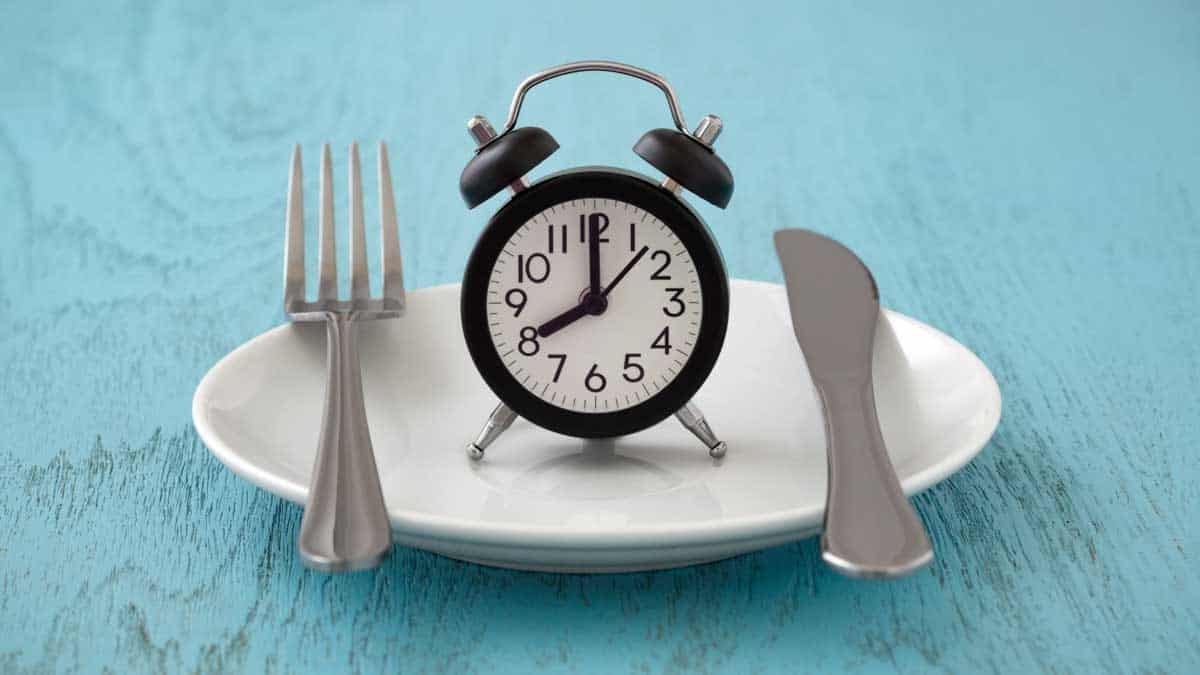
Fasting
Fasting on keto has become very popular. It can accelerate a return to ketosis after a 'cheat' day, or can be beneficial for boosting ketones to accelerate weight loss.
The goals of fasting are to reduce blood glucose, glycogen and insulin levels. Often, this can happen by fasting overnight. But, some people find benefit from more prolonged periods of fasting.
There are many variations of fasting. Some people will fast for 1 to several days at a time, where others will choose ‘time restricted feeding’ or intermittent fasting.
Definitions of each of these types of fasting will vary. Typically, ‘time restricted feeding’ refers to eating only during an eight-hour window of the day and fasting for the rest. ‘Intermittent fasting’ (or IF) can be fasting overnight (usually for about 15 hours) to fasting for up to two days per week (also referred to as “5:2” fasting). There are many variations, designed to fit different needs, bodies and goals. Most people who follow IF, usually follow the 16:8 model, where they fast for 16 hours and only eat during an 8 hour period each day. Other types of fasting include 14:10 intermittent fasting and OMAD (one meal a day).
Before embarking on a longer fast, make sure you consult your healthcare professional to ensure safety. Any fasting can cause stress on the body and it’s important to keep proper nutrition, electrolyte balance and hydration during these times.

Cheating or temporary indulging
When I eat a high carb meal (and I do sometimes), I never actually refer to it as cheating. Using the word 'cheating' has a negative connotation and the last thing I (or anyone) needs is to feel bad about indulging from time to time. I choose to refer to those meals as an 'indulgence'. After all, that's what it is, right?
If I go to a concert and there's nothing (I mean nothing) that could be keto except a hamburger patty all by itself on a plate, I'm gonna take that time to scarf some of that bun and fries and enjoy the heck out of it. And the next day, I'm right back to keto-ing in my whole-foods, lots-of-veggies kind of way.
After you've been fat-adapted for a while (at least two months or longer), you can typically consume a high carb meal and pop right back in to ketosis the next day, especially if you fast for about 15 hours after that 'indulgence' meal.
Some folks like to consume exogenous ketones to help their bodies get back into being ketone burning machines. This works for some and not for others. My advice is to try them out and see how they work for you.
Live life fully and if you really need to eat that peach, eat that peach. Or, even better, share it with a friend. Just don't do it very often and you should be just fine. By keeping the indulgences to a minimum, indulging only after fat adaptation and counting your macros, you should still be rolling down the road to reaching your keto goals.
If you end up indulging on something sweet (like fruit, for example), you'll probably find that your sweet tolerance has totally bottomed out. Things you didn't find terribly sweet before keto will most likely taste overly sweet. Once you've been eating keto for a while, you need far less of a sweet indulgence to be satisfied. I find that works pretty well to keep me in check.
Supplements for a keto lifestyle
Here's a quick run-down of products that can provide the most support for your keto lifestyle:
MCT oil
MCT Oil is a supplement providing medium-chain-triglycerides (fatty-acids) that the body and brain can easily convert directly into ketones. These supplements provide fast and sustained energy once the body reaches a state of ketosis. MCT oil comes in two forms: oil and powder. The brands I like best are Garden of Life, who has a liquid MCT Oil, and a powdered MCT product, and HVMN, with multiple flavors of MCT Oil Powder.
Electrolytes
There are many metabolic processes that change when our bodies are in ketosis that affect the way we utilize water and electrolytes.
Electrolytes are minerals that are very important for essentially every function in our body - from muscle activity and recovery, brain and heart function, to energy production, just to name a few. They maintain nervous system function by conducting electrical charges that enable nerve cells to communicate. This affects everything including brain function, muscle contraction, regulating blood pressure and keeping our heart functioning properly. They include sodium, potassium, magnesium, calcium, chloride and phosphate. Being deficient in these minerals can cause symptoms that are associated with the ‘keto flu’, when the body is shifting into and getting used to being in ketosis. However, these symptoms can also occur long after achieving ketosis, which can leave you feeling crummy. One of the reasons why people may be feeling less-than-optimal effects from their ketogenic diet, is that electrolytes aren’t being replenished. With carb-restricted diets, you need more electrolytes than you might think! Read my detailed article about the Importance of Electrolytes on Keto.
In addition to eating foods that are plentiful in electrolytes, here are a few good ways to supplement your diet to stay hydrated and keep your electrolytes in balance:
Bone broth
Homemade bone broth is high in electrolytes and trace minerals. It's also high in collagen, which provides great support to the digestion, joints and cartilage and can also boost immunity. Use it in soups or stews or warm it in a cup with a few seasonings and drink it like you would a cup of tea. Read more about the benefits in my recipe for homemade bone broth.
Powders
Powders are a cost effective way to supplement electrolytes. They are easy to just shake into your water bottle or stir into a glass of water.
Most brands, such as Ultima and LMNT make individually packaged doses that are super portable. Other products from Nuun and Gu are produced in tablets that dissolve in water, just like a powder.
My favorite brand of powdered electrolytes is Ultima. They have the best flavors (try their Mocktini flavors - truly amazing!) that are sugar-free, sweetened with Stevia, are non-GMO and have no artificial colors or flavors. I like that they include added Vitamin C and other trace minerals to help my body get what it needs. And, their delicious flavors come in canisters and easy, portable stick packs.
Capsules and pills
These tend to be the easiest and most portable way to replenish electrolytes – no preparation necessary!
I always, always carry these with me in my pack when I hike, cycle or kayak. If I’m out in the sun, exerting myself and sweating, I take some electrolytes when I stop for a snack break. And, you don’t need an extra glass or water bottle to mix a powder. There’s virtually no waste and you don’t have to drink 8-16oz of liquid to get a whole serving. If I’m kayaking, the last thing I want to do is have to drink 8-16oz of water in one sitting (if you get my meaning!).
My favorite brand of electrolyte capsules is Vitamin Bounty Recover on Keto. While this product has ‘keto’ in the name, it’s not just for those on a keto diet. It’s for anyone that needs to ensure hydration and replenish electrolytes.
I like the amount of each electrolyte mineral that one serving provides. Many other products don't seem to supply enough for my needs and I need to take more, which is less than optimal.
Exogenous ketones
The most popular way people claim to enhance their state of ketosis is to consume exogenous ketones (exogenous meaning supplementing from outside the body, rather than producing them naturally from inside the body). These are supplements that provide ketone salts with BHB (beta-hydroxybutryrate), a ketone molecule.
Most of these products tend to be very expensive. And, there isn't much research supporting their effectiveness for promoting weight loss or helping the body reach ketosis faster. Read this from the Diet Doctor for a really good post on exogenous ketones. They go into depth on a few of the most popular brands and their experience with them.
Keto meal powders
Since a keto diet requires specific macro ratios, if you're looking to supplement your diet with a meal replacement shake, it's important for it to have an ideal macronutrient ratio. High protein shakes can knock you out of ketosis, so finding a product that is specifically formulated for a keto diet is a very good idea.
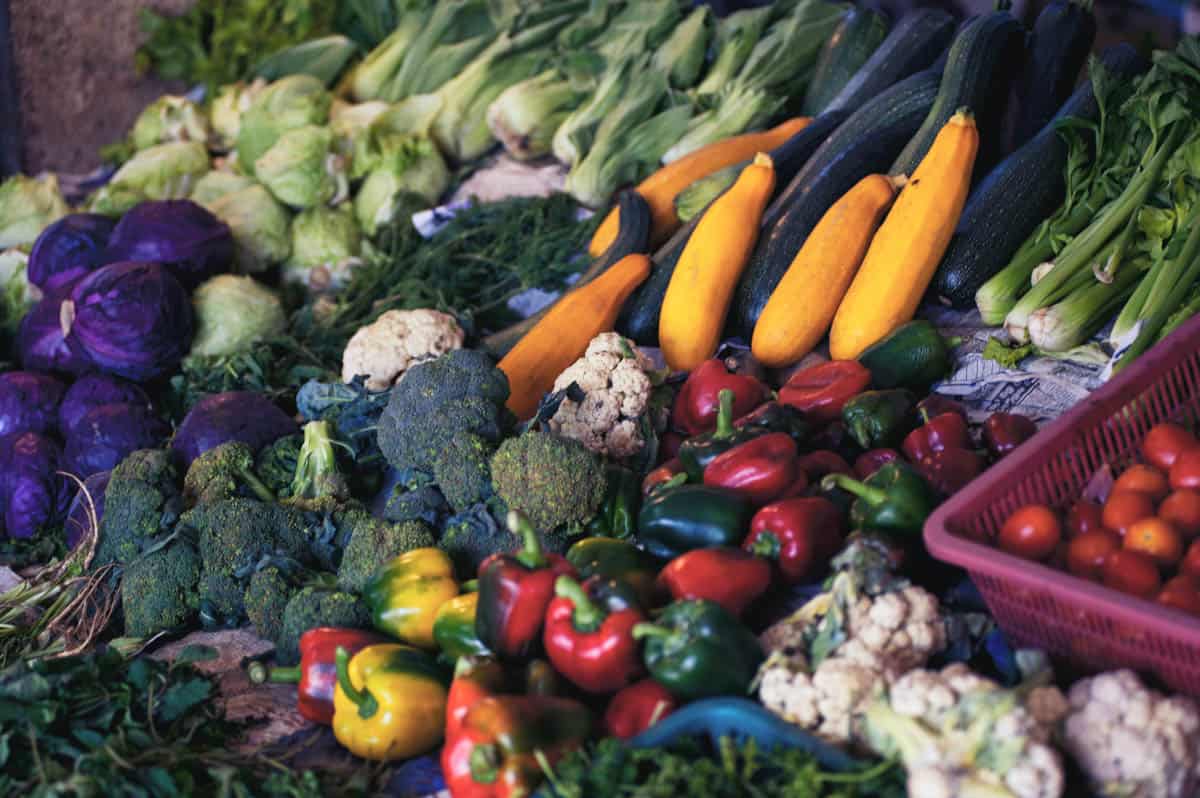
Foods to eat on a keto diet
While almost any food can be eaten on a keto diet (as long as you maintain proper macros for your goals), here's a list of whole foods that should make up the bulk of your diet. If you need some of that potato, you can have some and still remain in ketosis - it just means you can have some, but you'll need to make some adjustments to your diet and macronutrient balance to accommodate that splurge.
Here are foods that I recommend as part of a healthy keto diet:
Animal and seafood proteins
Meat and Poultry
- Chicken (mostly dark meat)
- Beef (fattier cuts such as ribeye, ribs and oxtail)
- Lamb (all cuts)
- Pork
- Turkey (mostly dark meat)
- Goat
- Rabbit
- Venison
- Cornish hen
- Duck
- Goose
Seafood
- Salmon*
- Shrimp/prawns
- Scallops
- Sturgeon*
- Sole
- Mackerel*
- Tuna
- Sardines*
- Sea bass
- Crab
- Lobster
*fattier options
Healthy oils, fats and dairy
Oils high in Omega-3 fatty acids
- Fish oil
- Olive oil
- Hemp oil
- Flax oil
- MCT oil
- Avocado oil
- Coconut oil
Organic Dairy Products
- Grass-fed butter
- Cream
- Cheese
- Half and half
- Sour cream
- Low sugar yogurt
- Sheep cheese
- Sheep dairy
Nut Oils, Seed Oils and Butters
- Peanut*
- Almond
- Walnut
- Cashew
- Macadamia
- Tahini
- Pecan
- Sunflower Seed
*No sugar added
Nuts and seeds
Nuts
- Walnuts
- Cashews
- Macadamias
- Almonds
- Brazil nuts
- Peanuts
- Pistachios
- Tigernuts
Seeds
- Hemp seeds
- Chia seeds
- Flax seeds
- Flax meal
- Pumpkin seeds
- Sunflower seeds
Veggies and fruit
Most Berries
- Strawberries
- Raspberries
- Marionberries
- Blackberries
- Black caps
- Blueberries*
- Capers
Veggies and Fruit
- Asparagus
- Brussels sprouts
- Broccoli
- Cauliflower
- Cabbage
- Kale
- Chard
- Collards
- Endive
- Arugula
- Avocado
- Tomatoes
- Green beans
- Turnips
- Beets
- Lime
- Parsley
- Seaweed
- Rutabaga
- Lettuce
- Spinach
- Fennel
- Cilantro
- Eggplant
More Veggies and Fruit
- Scallions
- Garlic
- Onion
- Leek
- Cucumber
- Lemon
- Bok choi
- Olives
- Hearts of palm
- Bell peppers
- Hot peppers
- Sweet peppers
- Zucchini
- Spaghetti squash
- Carrots*
- Okra
- Jicama
- Radish
- Acai
- Artichoke
- Mushrooms*
- Celeriac
- Celery
- Bamboo shoots*
*In moderation
Foods to avoid (most of the time)
- All grains (whole or processed), with the exception of vital wheat gluten and oat fiber used in many keto baked goods, as these are very low in carbs.
- Refined sugar - This includes all candies and sweet baked goods made with sugar, coconut sugar, maple sugar, etc. Many products may include sugar in their recipes that you wouldn’t necessarily think about, such as sauces, sausages, yogurt, salads, etc. Always be sure to check the ingredient deck for those hidden sweeteners.
- High fructose fruit and fruit juices
- Dried fruit
- Milk
- Starchy vegetables - such as potatoes and squash
- Beans and legumes - such as pinto and black beans and lentils.
Some of these foods may be tolerated in small quantities. If you are able to stay in ketosis at around 50 grams of carbs per day, you may be able to add a small amount of starchy vegetables or a small serving of fruit. You really just have to keep track of your macros.
Foods to eat if following a Targeted Keto Diet (TKD)
If you're like me and follow a targeted keto diet, here's a list (probably not comprehensive) of nutrient-dense foods I like to consume in small quantities:
- Cherries
- Papaya
- Kiwi
- Mango
- Grapes
- Apples
- Apricots
- Sweet potato
- Lentils
- Garbanzo beans
- Pinto beans
- Winter squash
- White potatoes
Quick no-cook keto snacks
There are some very simple keto snacks I keep around that don’t need to be cooked or prepared. I love whipping up some good fat bombs (super high fat snacks like Flourless Peanut Butter Chocolate Chip Cookies), or Easy Keto Brownies. But sometimes I need some quick go-tos. Here’s a list of tasty treats that I keep in my pantry and fridge for times when I need a little somethin’ (this may not be a comprehensive list…):
- Olives
- Salami
- Really tasty cheese - like a gourmet white cheddar
- Marcona Almonds or regular almonds (these top four items make a great snack or lunch when combined!)
- Macadamia nuts, walnuts, or Candied Maple Bourbon Pecans
- Whisps (or other cheese crisps)
- Low-Carb Sugar-Free Whipped Cream or mascarpone cheese and berries - sweetened with a keto-friendly sweetener
- A tasty dip with cucumber slices or bell peppers - such as my Blue Cheese Dressing, or delicious Guacamole
- Nut butter or cream cheese and celery sticks - watch for added sugars in nut butters
- Blend up a quick smoothie - try my Keto Strawberry Smoothie with Almond Milk
- Keto friendly snack bars - I like like these Keto Nut and Seed Bars from Munk Pack

Alcohol and the keto diet
If you like to imbibe, good news! Keto is one diet where you don’t have to forego alcohol… well, some kinds of alcohol. Consuming those additional calories might stall weight loss, even when eating keto. Light or occasional drinking might be fine, as long as it doesn’t contain sugar. While you can make your own keto simple syrup if you like mixed drink cocktails, you can also purchase ready-made sugar-free Simple Syrup.
One thing to keep in mind when consuming boozey things while in ketosis: alcohol will affect you more strongly than it did when you weren’t keto, so take it sloooooowwww… You may only be able to drink about half as much as you did before being in ketosis. For reasons that aren’t entirely clear, the liver has less capacity to process alcohol. Also, carbs tend to slow alcohol absorption. So When you’re consuming fewer carbs, you become more of a lightweight. And, the hangovers may be worse. So if you drink while eating keto, make sure you stay hydrated and consume additional electrolytes.
Weight loss stalled? Could be the booze…
When consuming low carb alcohol, keep in mind that you’re still consuming calories. Even if your macros are in the proper ratios, you’re still working within the guidelines of consuming a proper caloric intake.
If you’re looking to lose weight and are consuming around 1500 calories per day, two glasses of wine can boost you above that, depending on what your diet consisted of that day.
If you find your weight loss has stalled due to boozey indulgence: 1) Make sure you are consuming alcohol in moderation, which is always a good idea. Your liver will thank you. Or 2) You’re going to have to burn those calories off. If you imbibe on a regular basis (like those two glasses of wine every day), you may be looking at weight gain even if you’re in ketosis.
Here’s a rundown of the most popular alcoholic drinks as they relate to carb content:
Beer
Well, this is one drink that is loaded with carbs, I hate to say. I do miss a nice cold Porter on occasion.
Most beers contain between 9-15 carbs per bottle. If you are following a cyclical keto diet (CKD) or have times where you feel okay consuming more carbs in a day, then you can probably indulge on occasion. But consuming ‘non-light’ beer regularly can toss you out of ketosis.
If light beer isn’t your thing, there are quite a few options for alcohol consumption that are perfect for eating keto, such as wine and spirits.
Wine
Personally, I’m a wino. I love wine and everything about it. Lucky me, because wine is on the very low end of the carb scale. However, I still have to be careful how much I consume.
Dry wines can have as little as .5 carbs per glass and up to 3. All others you can probably be safe in saying that they contain around 4 grams of carbs per 5 ounce glass, unless it’s a sweet wine. If it’s sweet, plan on it having more carbs than you want to intake. You might to want to stay away from those completely, as they will certainly contain a lot more sugar. These typically include Riesling, Muscat, Vouvray and White Zinfandel, ports and dessert wines. Sauvignon Blanc, Chardonnay, Viognier, white Bordeaux and most reds are good examples of wines that will be on the lower end of the carb spectrum, with red typically lower than white.
Spirits
Pure spirits are all fine for keto, as they won’t contain any carbs. It’s what they get mixed with that can cause problems, so watch the mixers! Dry martinis and whiskey with bitters on the rocks are probably safest. Liqueurs are very carb-loaded. Kahlua, Benedictine, Grand Marnier, etc. all are delicious, but come with a high carb content.
Spritzers and seltzers
There are many beverage companies that have launched low carb spritzers and seltzers. Most have a lower alcohol content (around 5%), and tend to be quite light and refreshing. These are also great to use with your favorite low carb spirit to make a sparkling cocktail. I haven't tried many of the spritzers that are newer on the scene, but Truly makes some incredibly good options.
FAQ
Being in ketosis and following a keto diet is typically safe for most people. Ketosis is often confused with ketoacidosis, which is dangerous, but very different from ketosis. However, it's advised to check in with your doctor before starting a new diet.
When shifting into ketosis, some people can experience 'keto breath'. This is usually temporary and will subside as your body becomes adapted to a lower carb intake. Try drinking more water or flavored low carb drinks, make sure you have good oral hygiene or suck on sugar-free mints or gum.
Of course! It's best to wait until your body is 'fat adapted' (usually 2-3 months after starting a ketogenic diet) before having occasional high carb treats or meals. Enjoy the indulgence and return to your diet right after. If you are on a keto diet long term, you may be able to increase your carb intake to close to 50 carbs per day and still maintain ketosis. And, you'll return to ketosis faster after having a 'cheat' day.
Hunger is typically curbed while on a keto diet. If you find you're hungry between meals, it's possible you may not be in ketosis. It can also be due to not eating enough fat or protein. Make sure your consuming enough fat and consider a snack that's low in carbs and high in fat.
The keto diet is also a moderate protein diet. Be sure you're consuming enough protein. The increase of fats and proteins on a keto diet will often provide incredible satiety, making the diet easier to follow.
While there aren't any studies on a long-term ketogenic diet, there isn't any evidence that shows it's harmful. It should be fine as long as your bloodwork levels look good, you're eating a healthy, well-rounded diet, your weight is within a healthy range and you're feeling good. All in all, it is generally considered a safe diet, long term.
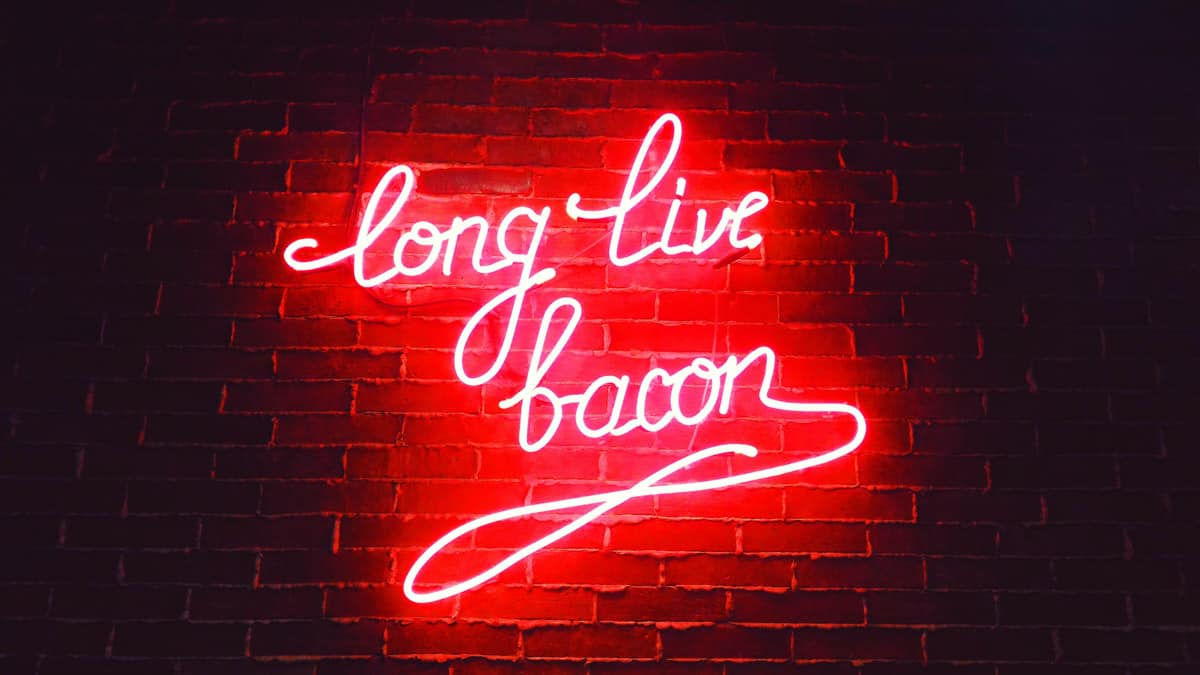
Summing it up
As a beginner just starting on a keto journey, this may seem a little overwhelming. To get started, stock your kitchen with keto pantry staples, have a list of tasty keto recipes to draw from and you'll be well on your way.
As with all things, starting a new diet/lifestyle is a process and takes preparation to get going. Having a good meal plan, keeping healthy keto snacks on hand and drinking daily electrolytes will start you off on the right foot.
Have questions? Contact me, I'm happy to help!

Tracey Hatch-Rizzi, LAc, MAcOM is an acupuncturist, herbalist and bodyworker with a Master's Degree in Oriental Medicine. She is Monash University trained in a low-FODMAP diet, and has spent many years helping her patients follow special diets and manage dietary restrictions. She has been following a low-carb and low-FODMAP diet for several years and is dedicated to providing delicious, healthy recipes, and educational resources to help others find optimal health through informed diet and lifestyle choices. Learn more...
